BGS provides operations and science management for major scientific ocean-drilling projects. Since 2003, we have implemented several high-profile expeditions for the European Consortium for Ocean Research Drilling (ECORD), under the auspices of the International Ocean Discovery Program (IODP). We work closely with our partners within the ECORD Science Operator (ESO), a consortium comprising:
- BGS
- University of Bremen: Center for Marine Environmental Sciences (MARUM)
- University of Leicester: geophysics and borehole research group
- University of Montpellier: transfers in porous media team
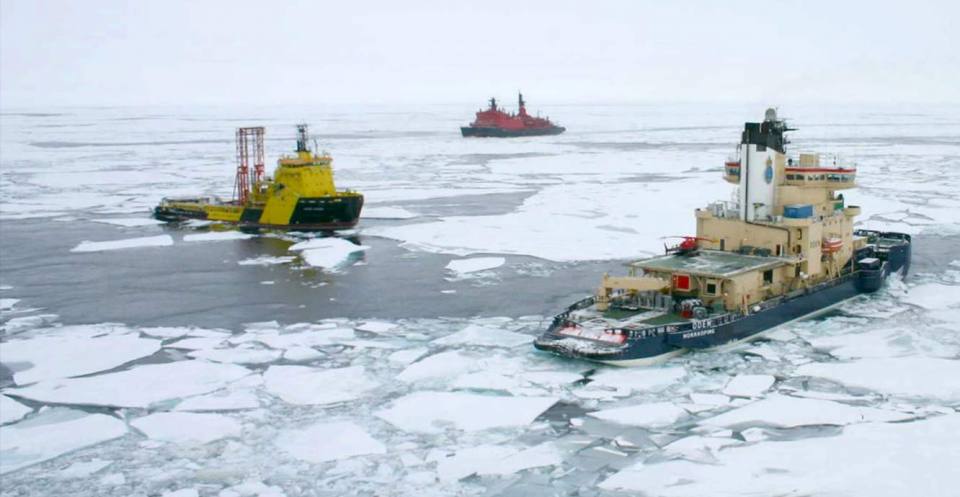
IODP Expedition 302: Arctic coring expedition, 2004. The drillship Vidar Viking (yellow) remains in position for coring and logging, while the Oden (blue) and Sovetskiy Soyuz (red) defend the drillship from moving ice, 2004. © Arno Keinonen.
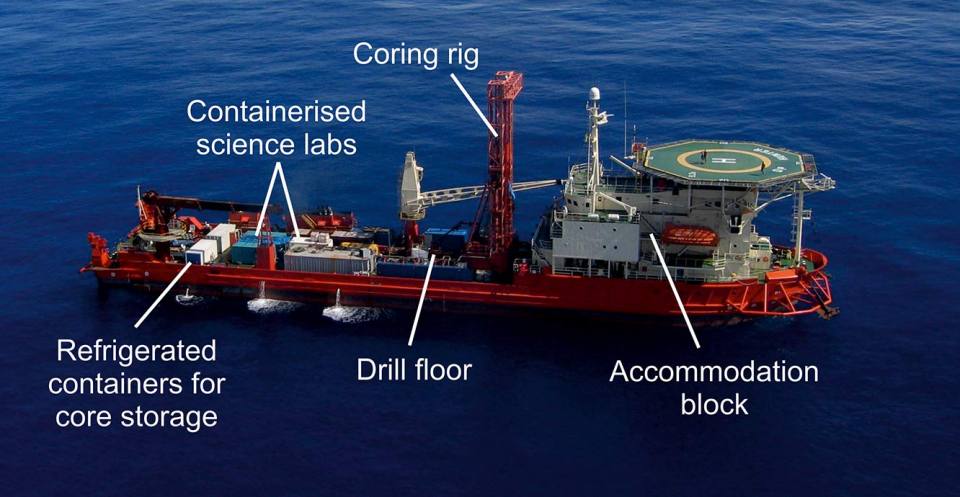
The drillship DP Hunter during IODP Expedition 310: Tahiti sea level, 2005–2006. The DP Hunter cored the shallow reefs around Tahiti to gather new data on the paleoceanographic evolution of the tropics as recorded in coral reefs located in tectonically inactive areas. BGS conducted a sister expedition in 2010 on the Great Barrier Reef (IODP Expedition 325). © ECORD/IODP.
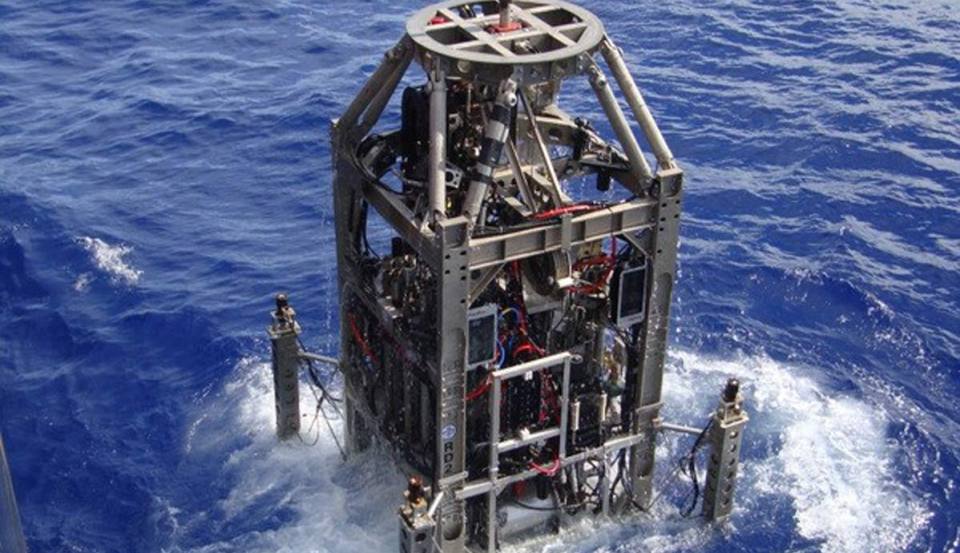
Launching of the BGS Rockdrill 2 (RD2) during IODP Expedition 357: Atlantis Massif serpentinisation and life, 2015. This was the first IODP expedition to deploy sea-floor drill technology. Two drills were deployed at various times during the expedition, the BGS RD2 and the MARUM MeBo70. © David Smith, ECORD/IODP.
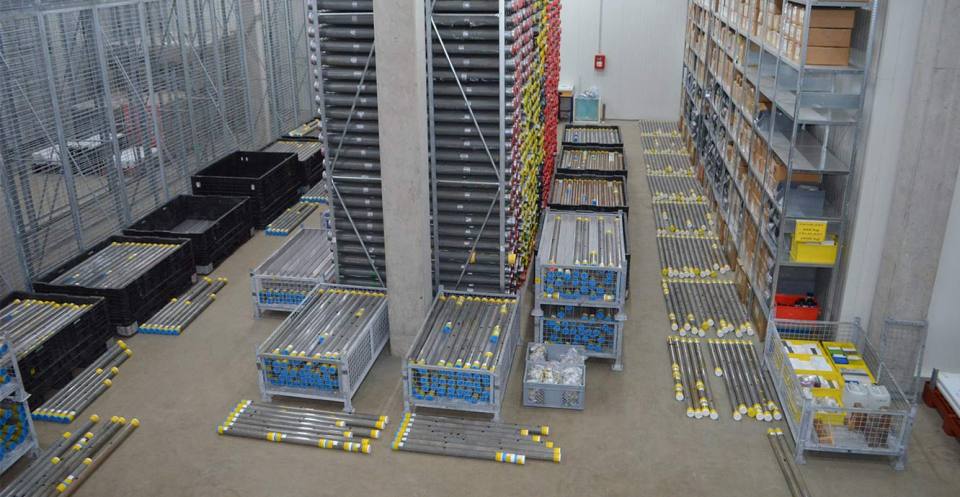
Expedition cores laid out in the IODP Bremen Core Repository, MARUM, University of Bremen, during IODP Expedition 381: Corinth active rift development, 2017–2018. The cores were readied to be processed, analysed and sampled in the nearby laboratories by the international science party. © ECORD/IODP.
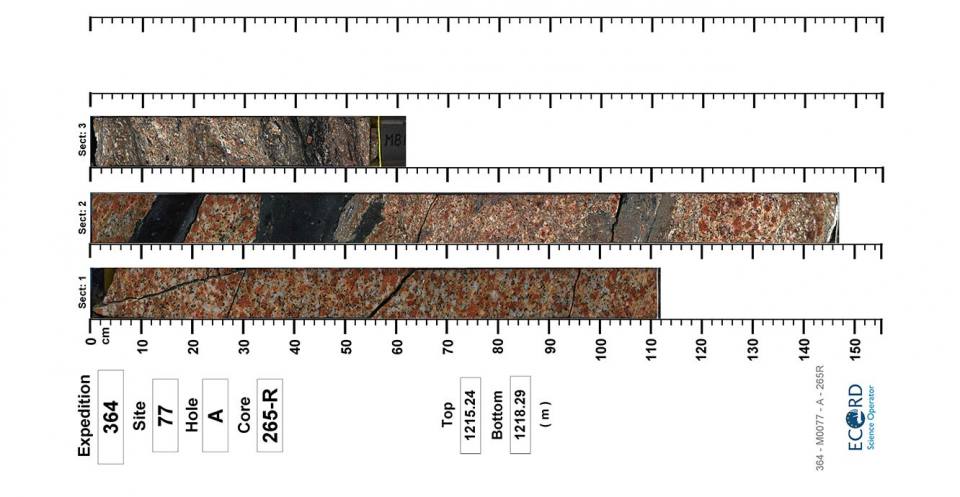
Images of the split surface of a core collected at about 1215 m below sea floor from IODP Expedition 364: Chicxulub impact crater, 2016. The cores are made of granite, which has been severely damaged by the shockwave generated by an asteroid impact 66 million years ago at the end of the Cretaceous Period (now linked to the demise of the dinosaurs). The impact moved these rocks 20 to 30 km in about 10 minutes before emplacement in their current location.
Image from IODP Expedition 364 Scientists (2017): Core overview images of IODP Hole 364-M0077A.
As part of the ESO partnership, we support the global geoscientific community in their efforts to address the challenges outlined in the IODP Science Plan:
- climate and ocean change
- biosphere frontiers
- Earth connections
- Earth in motion
We coordinate the ESO partnership. We design, build and manage offshore scientific drilling operations and provide coring expertise and operational oversight. Additionally, we provide procurement services, coordinate permitting and expedition scoping efforts, manage the science party and science outputs, and manage expedition outreach activities. Our consortium partners provide expertise, facilities and services for the curation, databasing, archiving and analysis of collected cores and samples, the acquisition of IODP standard measurements, and downhole logging services.
With our partners, we have implemented a series of eight ‘mission-specific platform’ IODP expeditions using a diverse range of vessels, including geotechnical vessels and self-raising lift boats with temporary drill rigs, multipurpose drilling vessels, and research ships equipped with robotic sea-floor drill rigs provided by BGS and MARUM.
We have carried out scientific drilling from the ice fields of the central Arctic Ocean to the barrier reefs of the South Pacific, drilling in water depths of less than 20 m to over 1.5 km. We have recovered over 6.6 km of core material from diverse lithologies including fossil corals that reveal the paleoceanographic evolution of the tropics; highly deformed, biosphere-hosting altered ultramafics from the central Atlantic Ocean, and a near-continuous lithological record from the Chicxulub impact crater in the Gulf of Mexico.
The cores and data that we gather are analysed by the expedition science parties, and later by the wider IODP community, to meet a wide range of scientific objectives.
The IODP expeditions implemented by BGS and partners within ESO are:
- Expedition 302: Arctic coring expedition, 2004
- Expedition 310: Tahiti sea level, 2005–2006
- Expedition 313: New Jersey shallow shelf, 2009
- Expedition 325: Great Barrier Reef environmental changes, 2010
- Expedition 347: Baltic Sea paleoenvironment, 2013–2014
- Expedition 357: Atlantis Massif, 2015–2016
- Expedition 364: Chicxulub impact crater, 2016
- Expedition 381: Corinth active rift development, 2017–2018
Related news
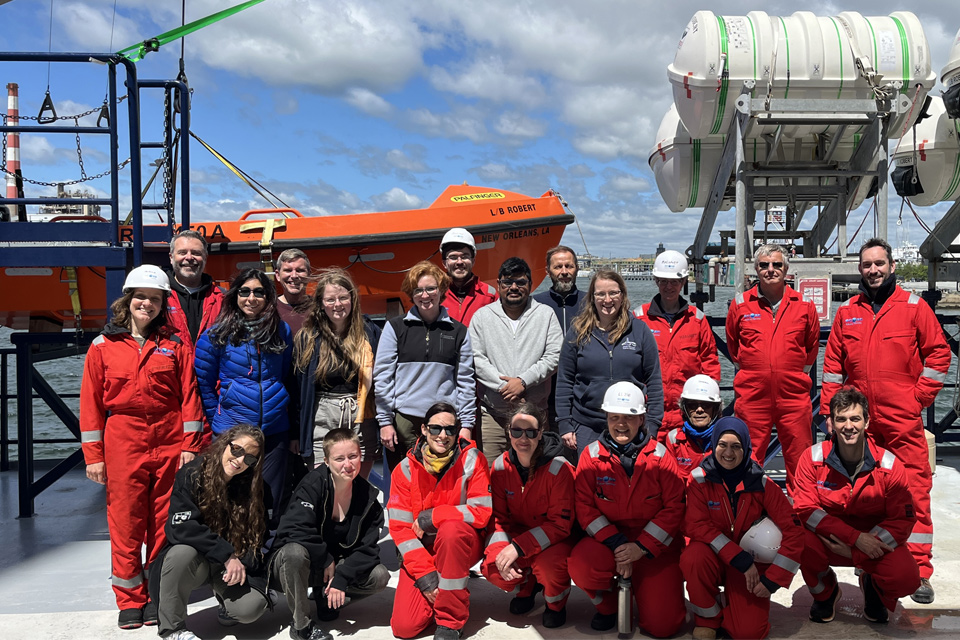
BGS scientists join international expedition off the coast of New England
20/05/2025
Latest IODP research project investigates freshened water under the ocean floor.
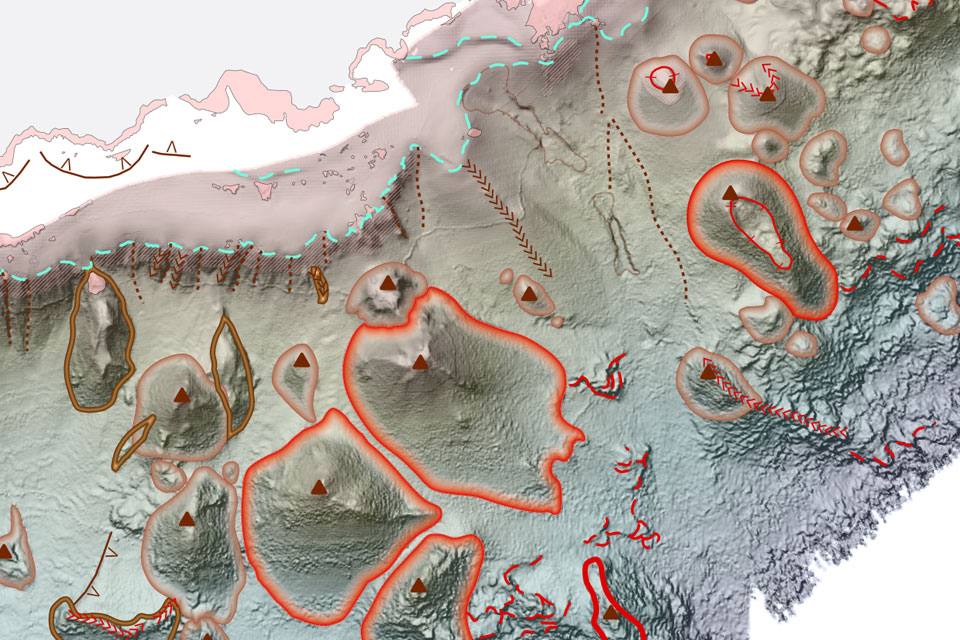
New seabed geology maps to enable long term conservation around Ascension Island
01/04/2025
BGS deliver the first marine geology and habitat maps for one of the world’s largest marine protected areas.
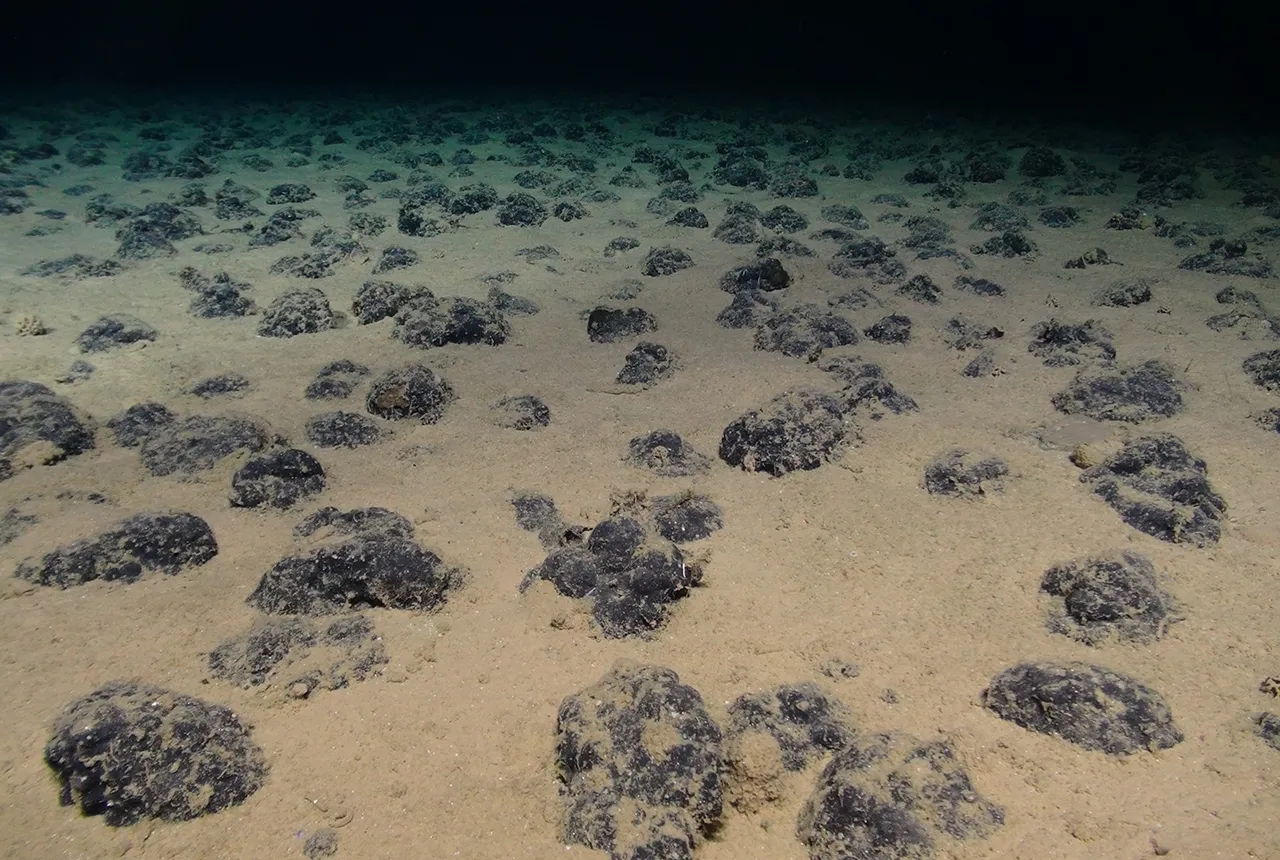
New study reveals long-term effects of deep-sea mining and first signs of biological recovery
27/03/2025
BGS geologists were involved in new study revealing the long-term effects of seabed mining tracks, 44 years after deep-sea trials in the Pacific Ocean.
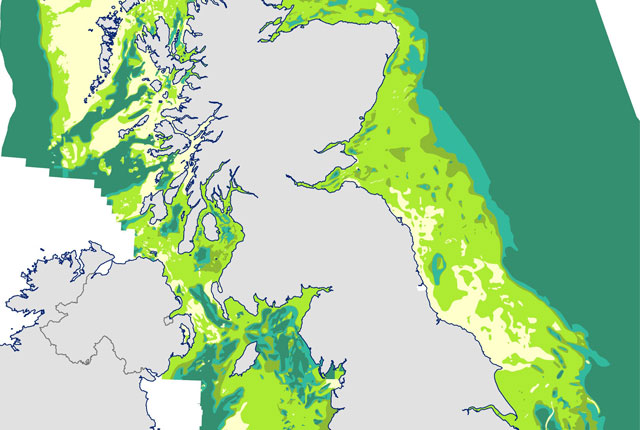
Seabed geology data: results from stakeholder consultation
31/01/2025
BGS collected valuable stakeholder feedback as part of a new Crown Estate-led initiative to improve understanding of national-scale seabed geology requirements.
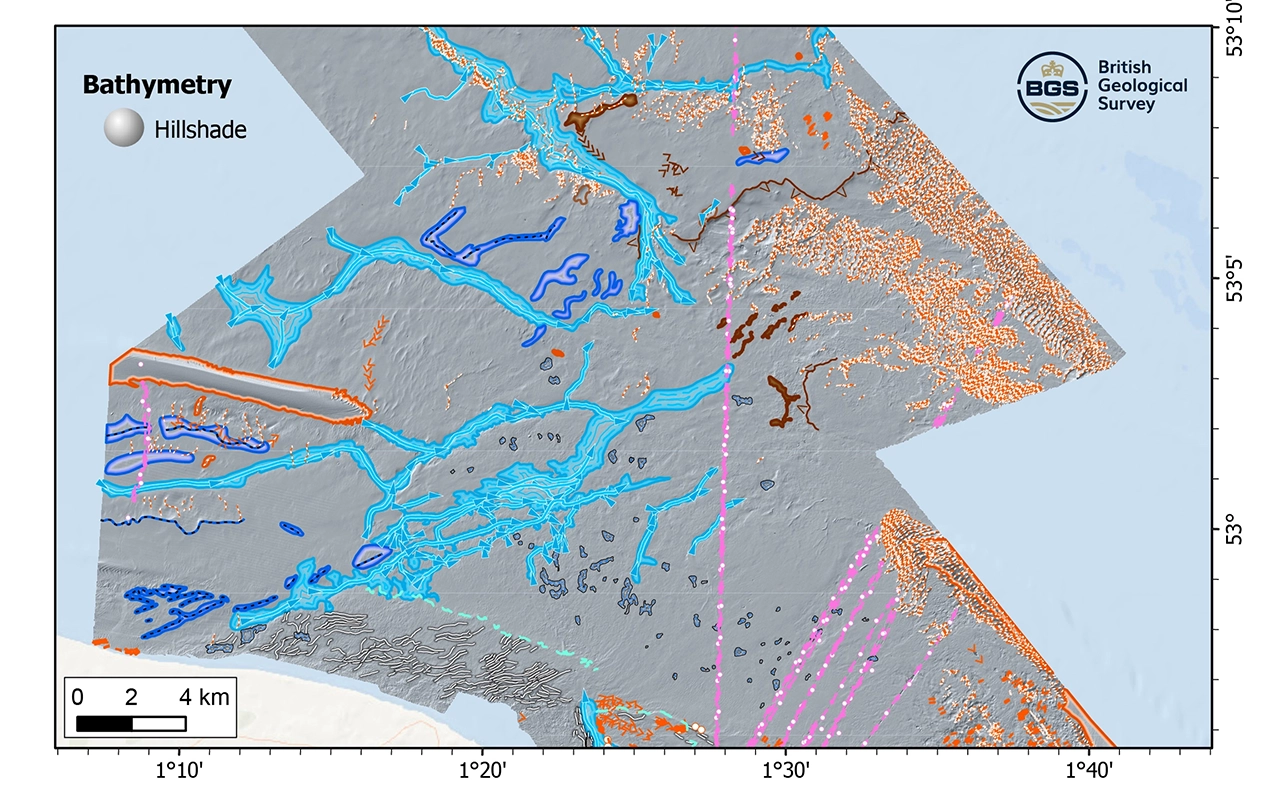
New research reveals the secrets of the seabed off the East Anglian coast
11/07/2024
New geological map will help in the hunt for new renewable energy opportunities whilst protecting delicate marine ecosystems.
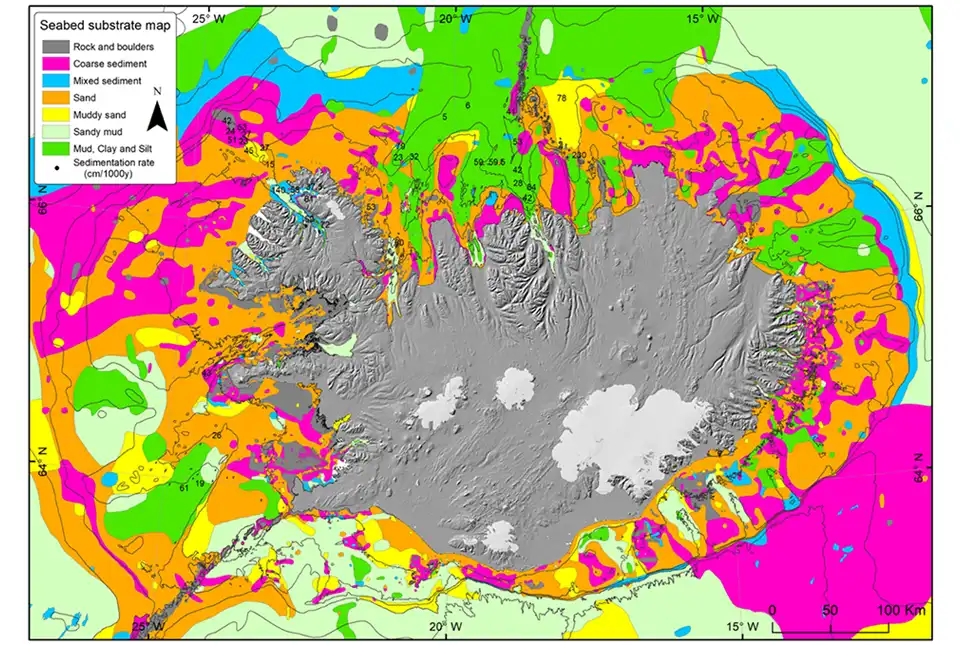
BGS awarded research grant to support potential offshore wind development in Iceland
13/05/2024
BGS has been awarded the NERC-Arctic grant for a collaboration project with Iceland GeoSurvey.
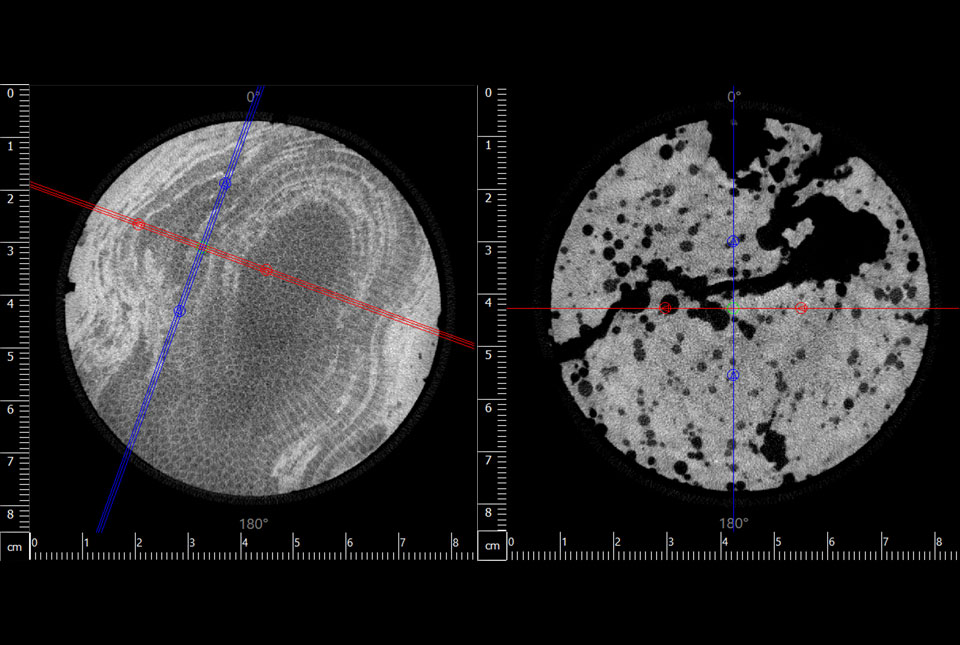
Largest CT core scan completed at the BGS Core Scanning Facility
09/05/2024
BGS has completed its largest CT core scan project to date, with around 400 m of core imaged for the IODP Drowned Reefs project.
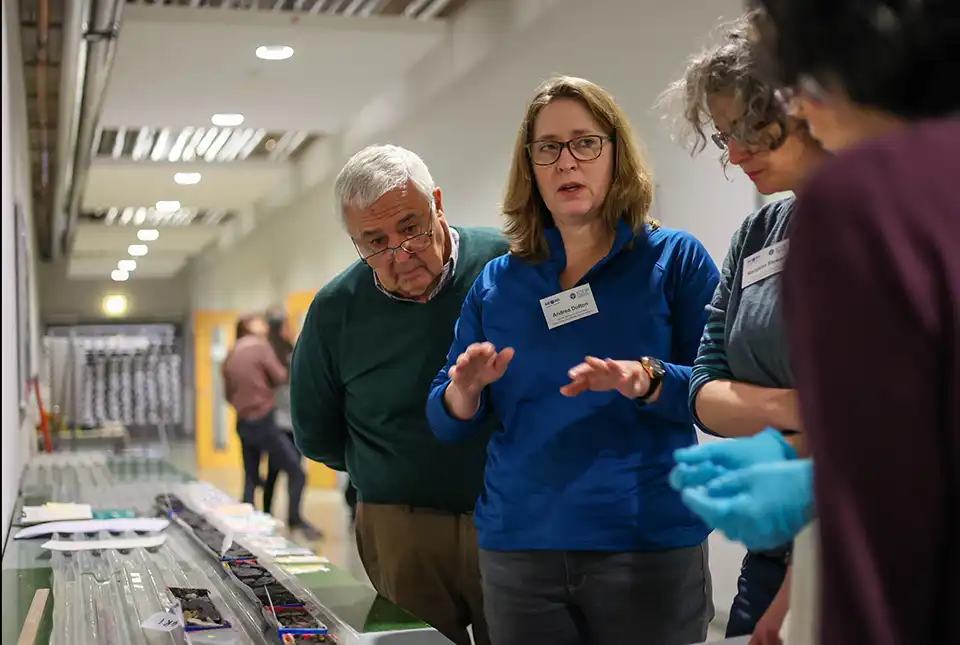
Scientists produce first record of environmental data off coast of Hawai’i
01/03/2024
An international team of researchers, including BGS geoscientists, have succeeded in acquiring a continuous record of environmental data using fossilised coral from Hawai’i.
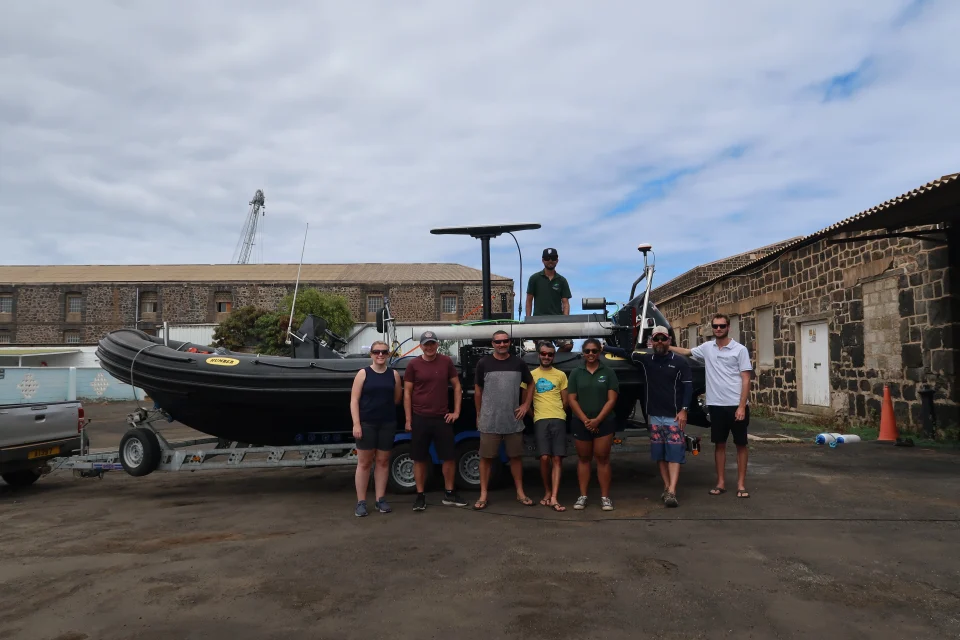
In photos: marine surveying a remote volcanic island
14/12/2023
A photo blog by members of the BGS Marine Survey team, who recently completed marine surveys around Ascension Island in the South Atlantic Ocean.
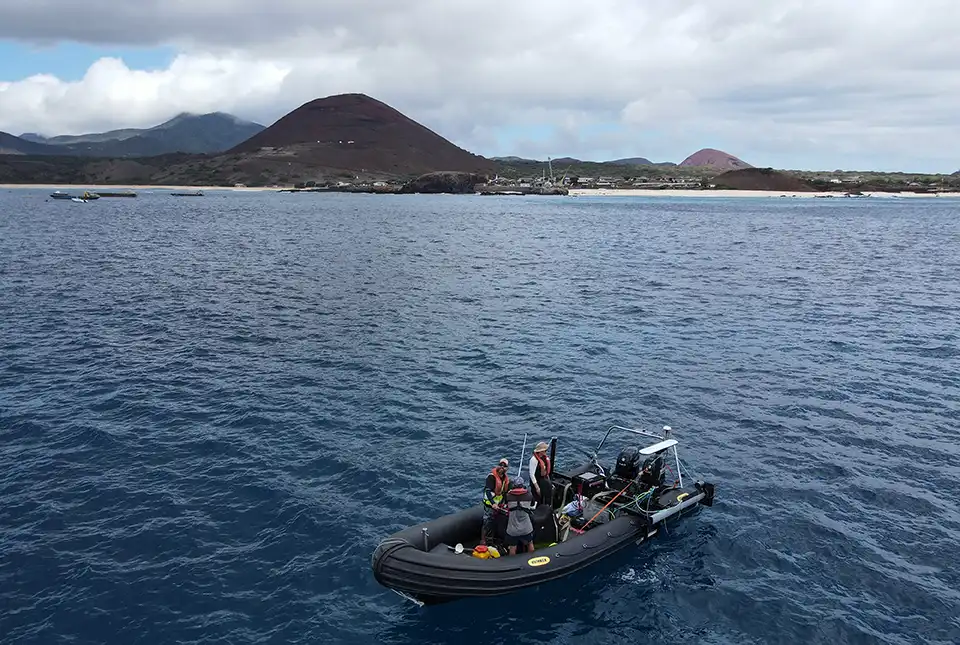
BGS completes first mapping expedition to Ascension Island
11/12/2023
BGS marine geoscientists travelled to Ascension Island to support its government with an ongoing, conservation-driven mapping programme.
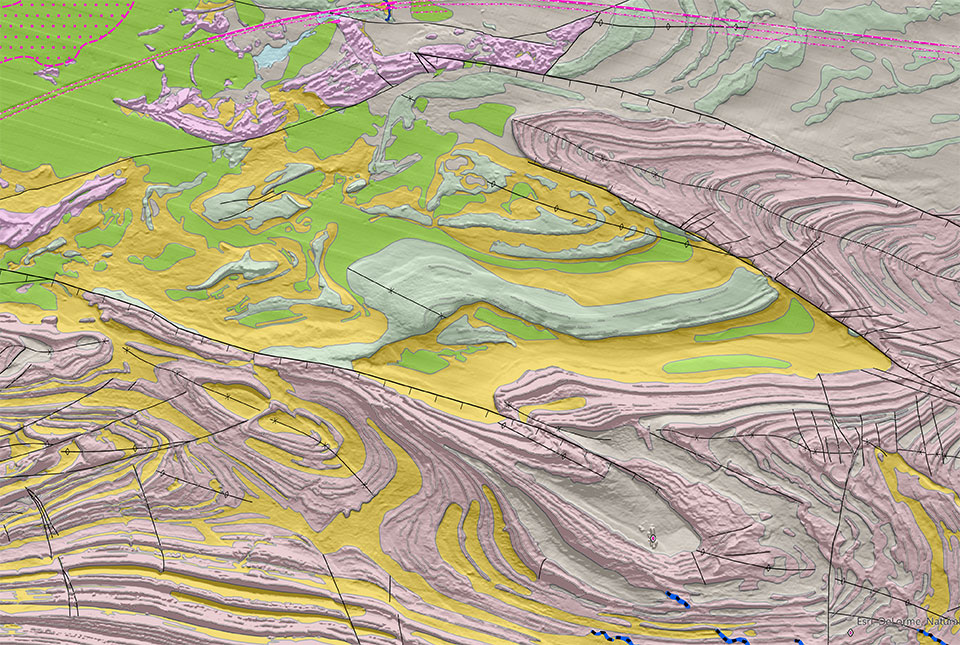
Industry-leading data sharing partnership announced
02/11/2023
A data sharing partnership has been agreed between BGS and Ossian, allowing BGS to advance its knowledge of the rock and soil conditions under the seabed.
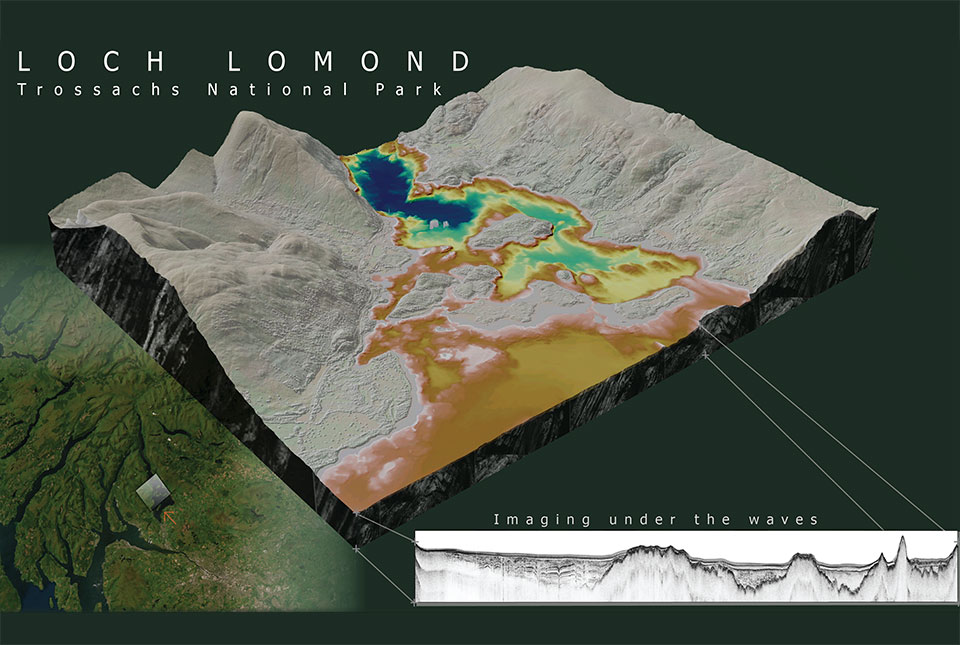
What lies beneath Loch Lomond?
17/10/2023
BGS geoscientists have visualised what lies beneath the waves of Loch Lomond, revealing an image of the loch bed and various sedimentary features of the subsurface.
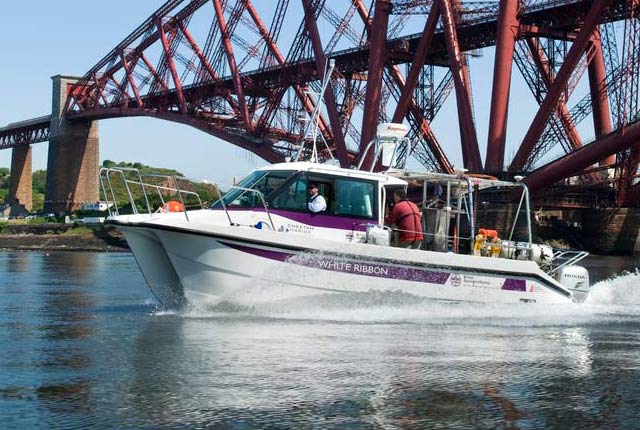
Sea floor: marine geoscience
Providing independent and expert geological advice, research and data acquisition to anyone working in the marine environment.
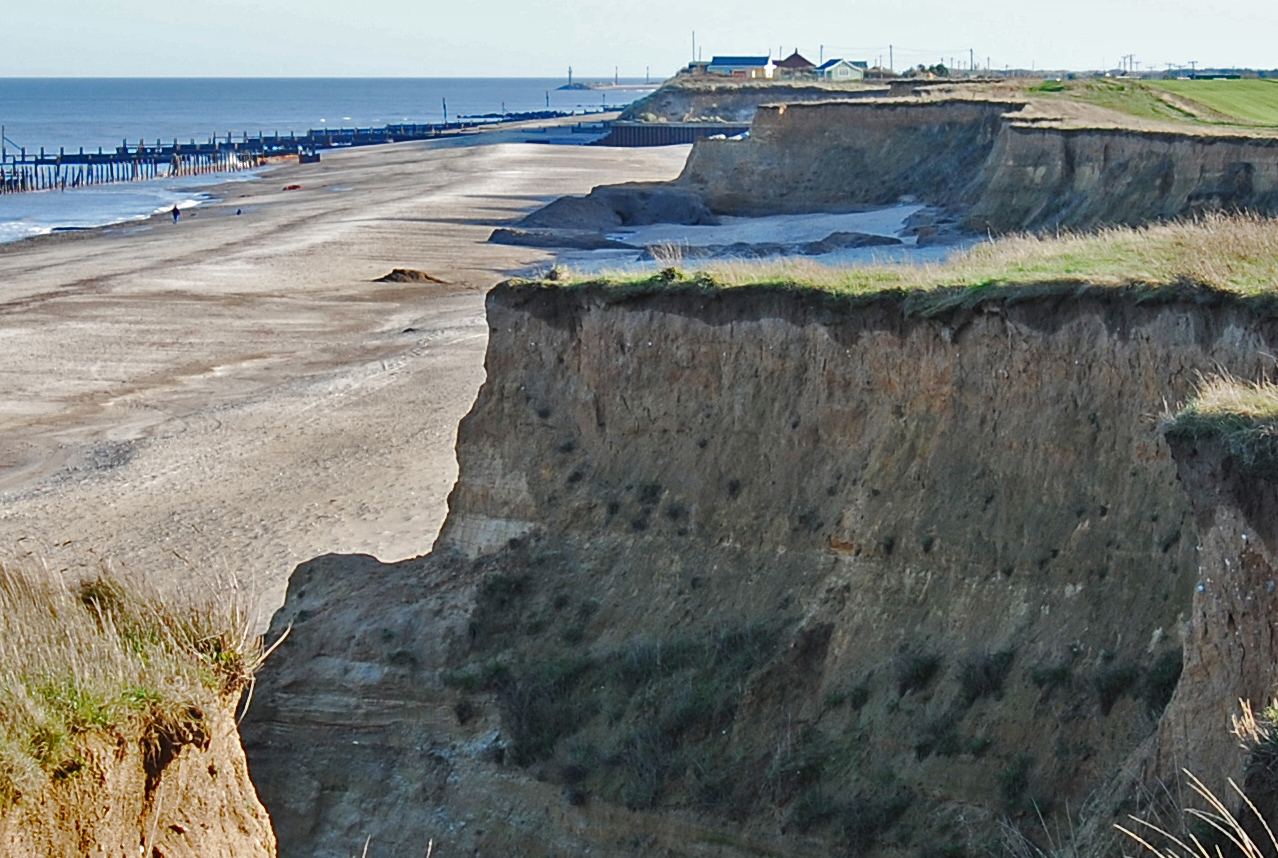
Coasts and estuaries geohazards
Providing independent and expert geoscientific tools and advice to assess different adaptation options to coastal flooding and erosion.




